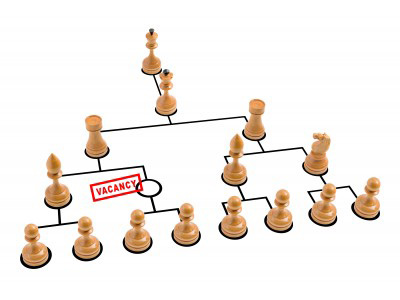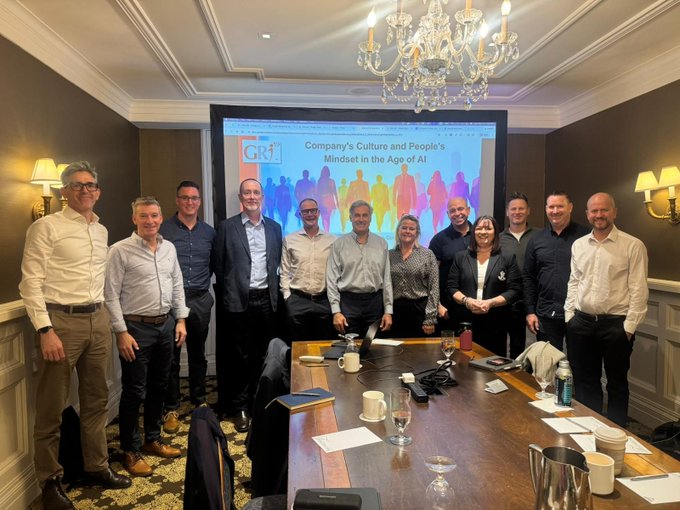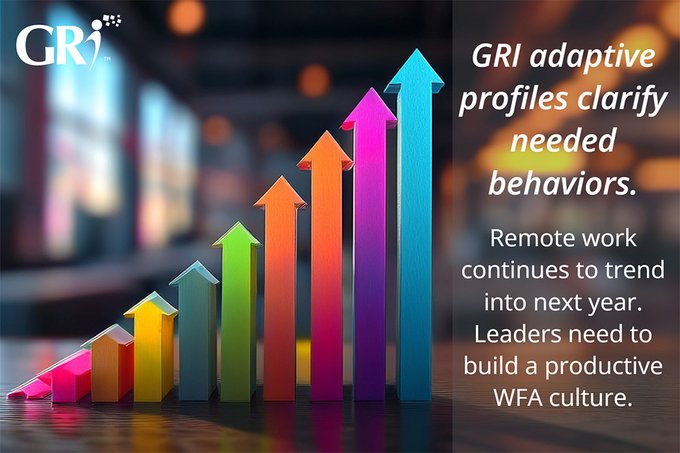Informed Hiring Decisions
Posted by Frederic Lucas-Conwell

Informed Hiring Decisions
Hiring the right people is not easy. Across ages, industries, and cultures, at all levels in companies, hiring has historically been problematic.
Sourcing techniques and internet tracking systems have dramatically improved some hiring processes, but still these basic issues remain. Calling on recruiting experts doesn't reduce the pain, either.

There are good reasons that hiring is problematic, as we will explore below.
The Big Question: How do we improve our hiring?
The Answer: With more precise information.
Highly refined information about behavior can give us greater accuracy in hiring, as long as we have a language to communicate it effectively. If you have new information, and if you have a way to really share it, with agreement about its meaning, usage and benefits, you have a much better chance of working together and making successful decisions based on this new information.
We will look at this in greater detail in a moment. First, lets look at the issues we face when hiring.
The Problems With Hiring
The process of hiring the right person for the job is:
Difficult - The amount of information to review for each candidate in order to predict his or her success is humongous, and can take hours for professional assessors at leadership levels. Getting to all relevant facets of a candidate to make a safer decision is simply impossible in most situations. Certainly, reaching what is relevant without even knowing what may be most relevant is challenging.
Error prone - Things happen, people evolve, their context evolves too. One cannot predict the company's future, or the future market. Errors in hiring are easily made when the information available is limited to guess work or inference, or based only on available history. Of particular importance is how the candidate will be managed, which may be the most impactful aspect of a successful hire.
Risky - Once a hiring decision is made the company begins to commit time and energy to the new hire. Other potential candidates are likely no longer available, so if you need to restart the process, you must restart it almost from scratch each time. Hiring the wrong person, you can end up feeling trapped, and like you have to continue with this new employee in order to justify the investment you made to get her or him. This is wasteful for all involved.
Expensive - Hiring consumes large amounts of management time and company resources. If a manager interviews 10 people and hires one, the time spent on the other nine interviews, reference checks and other processing, is in some sense wasted. And that's just the selection process. As mentioned above, on-boarding someone who turns out to be the wrong fit for the job is also costly. The hiring mistake can be hard, or impossible, to rectify, so all the time spent, from interviewing the candidate, through employment and finally to termination of the inappropriate hire, is wasted.
Clearly, having better, more reliable information on people would prevent hiring mistakes and reduce the costs involved.
Now let's take a look at how the study of behavior and personality might fit into this process.
The Behavioral Component In Hiring
The behavioral aspect in hiring has been profoundly studied, has matured, and has attracted more attention and respect over the last decades.
Behavior can also be referred to as "personality", often in the context of "personality assessments". More accurately, it is that part of "personality" that is related to how people perform, communicate, and develop their strength by acting in their own specific way.
Other systems designed to measure behavior may describe it as "style", "preferred style" or "cognitive style", or perhaps as behavior "patterns".
There are many systems on the market that measure personality with their own perspective and philosophy.
- Some are valid for recruitment, some are not.
- Some have long assessment processes, some short.
- Some build general categories, some are more granular.
- Some ask multiple, endless questions, others only ask few.
The GRI that we publish at Growth Resources measures behavior
- simply
- in a practical way
- precisely and
- at high speed
There are many characteristics of the GRI that make it unique for hiring, but first of all let's talk about a few aspects that are generally relevant for refining the hiring process by making use of behavior (or personality) information.
How do we effectively use this behavior information (assuming it is valid, reliable and practical)?
With it we can better:
- Define the demands of the job. If the position requires the individual to be "aggressive", for instance for a sales position, we will need to be more precise about what we mean by "aggressive", and qualify this attribute on the candidate's side too.
- Reach consensus on the job demands. The behavioral aspects are always the most fuzzy and challenging ones, not only for us, but also for others. We will not be able to on-board and consistently manage a person in the organization if there is no consensus between the ones involved in defining and communicating the demands of the job.
- Make use of the information for the interview. The survey, in essence, is asking questions for the interviewer, and applies some statistics that an interviewer could not. Additionally, there is more in a test than measuring key factors of personality. This information helps you, as the hiring manager, get to know the candidate faster, ask more appropriate questions, and ask other questions that you might not have thought to ask before applying the GRI.
- Focus interviewing Using the GRI results, you are able to focus on candidates who are most likely to meet the job requirements. The understanding is based on what we now know better, and all the other aspects of candidate behavior that may need to be better known and developed. There may be some situations where you will choose your new hire based solely on their behavior matching the job requirements, but the intent of this knowledge is to give you a broader, deeper, more nuanced view of all the appropriate characteristics of a candidate.
- Sell the job to the candidate. Interviewing is not just a screening contest. Good candidates need to be attracted to the job, and the position needs to be sold to them. Everything we get from the survey will help do that.
- Adjust candidate and job fit. Let's say the behavioral component is not a fit with the job requirements - at least we know it in advance. If you decide to hire the candidate based on other attributes, then this helps *awareness of the difference, and eventually you can adjust the job to better fit his or her behavioral traits, or vice versa. Similarly, you can decide whether to go with strong technical skills or choose to develop the candidate to acquire those skills.
"Development can help great people be even better - but if I had a dollar to spend, I'd spend 70 cents getting the right person in the door."
Paul Russell, Director, Leadership and Development, Google
Solving the Ultimate Issue: Language
One aspect we cannot stress enough is related to the language we use to describe people, assess them, talk about them, and communicate what is required of them. This may be more abstract than the behavioral aspect, but it is still very much in every second of what we do, and never more so than when we attempt to gain greater accuracy in the world of Human Resources.
Language is all around us, part of who we are, and how we communicate.
This is not a new issue. Indeed, it is a most ancient one. Our language - what we say, how we say it and how we write it, starts at the origin of mankind. Most of our important progress was accomplished when our ancestors took the initiative to code our language into writing.
So has been the case in the languages of math, physics, biology and medicine. So is the case today with programming languages and the internet revolution. But it has never been the case in Human Resources and for our own nature and characteristics.
This the challenge we undertake with the GRI: to code and understand our behavior differently, in a way that can transform how we speak about each other, and the way we perform.
Because we have so many words with overlapping meaning, in so many different languages, and because each of us give to these words our own interpretation, there is absolutely no chance we will get close to consensus if we make use of these words for describing behavior.

Words we use for behaviors are inherently ambiguous, politically biased and impractical. Language becomes our worst enemy for consensus and precision when it comes to behavior, yet behavior is our best contender for refining and improving the hiring process.
With its profiles and its own "language", the GRI ultimately reduces ambiguity. It makes it practical to take this critical behavioral information about personality and motivation into the hiring process, and other applications, too.
Transforming Hiring
In hiring, many of us go with our "gut", our instinctive awareness of candidates. Instinct, while it may be somewhat useful and necessary, is too subjective and too affected by individual biases to be consistently effective in hiring.
Hiring based on instinct may have worked for our parents and grandparents, because they had no other techniques available. It is not OK for today's world, when there is more accuracy at our disposal.
The GRI helps increase managers' confidence in their hiring decisions. The language of the GRI is key for better understanding and communicating about behavior. It is so much in our human nature, so close to us, that we may easily ignore it. But it needs to be considered seriously if we want to dramatically improve the quality of our hiring decisions.
Working with the GRI will finally help to:
- lower the risk of hiring
- reduce the time required to screen candidates
- reduce expense
- reach consensus on strategic and cultural aspects
- explain the position and company to the applicant
- interview, attract and better retain candidates
Latest Articles
Groupama Successful Transformation in Romania: The GRI, Catalyst for Profound Change
The history of Groupama in Romania is an eloquent testament to resilience, strategic vision, and the transformative impact of innovative management tools. Arriving at the...
Hybrid Work: A Management Revolution
The COVID-19 pandemic has acted as an unprecedented catalyst, radically transforming our approach to work. What was once a marginal practice has become the norm for many...
Leadership 3.0: Objective Insights for People-Centric Leaders
Steve, a brilliant entrepreneur, poured his heart into his work. His team at "Innovatech" was on the brink of a major breakthrough, a new app that promised to revolutionize...



